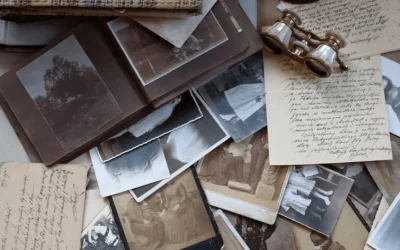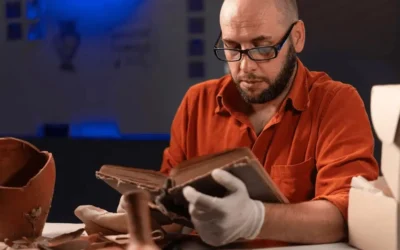Expanding Digital Preservation Collaboration
Margot Note
While digital preservation efforts are being led by members of the cultural heritage community working at institutions traditionally responsible for saving materials, the challenges of digital preservation require the involvement of new participants.
New Stakeholders
New stakeholders include many organizations with diverse needs and priorities, including government agencies, media companies with digital content catalogs, community groups documenting their histories, and companies needing to maintain records for business use and pending or anticipated litigation. Other stakeholders include individuals, rights holders, funding agencies, users, hardware and software developers, producers, and distributors of digital materials.
Collaboration and Cooperation
Collaboration with these stakeholders is required to make digital preservation activities effective. Cooperation with communities beyond archives, libraries, and museums may increase funding opportunities, build shared resources, and eliminate redundancies. An interdisciplinary approach is needed because discovering new preservation frameworks assists everyone, no matter what the materials, or industries that employ them. Outdated boundaries, even among library, archive, and museum knowledge workers, no longer serve us when faced with the complexity of digital preservation activities.
The higher stakes in digital preservation are creating a stimulus for new stakeholders to emerge and add value. Digital materials also require creators to act as the “first responders” to preservation. The extent and nature of collaborative activity have been noted in efforts such as the “Community Watch and Participation” action of the Digital Curation Centre’s Curation Lifecycle Model, where collaboration to develop shared standards, tools, and software is promoted. Archivists cannot preserve everything alone.
Big Data Scholarship
One of the principal participators and drivers of change is scholars, most notably those in the sciences but also in the social sciences and the humanities. Scientists increasingly use data-driven techniques and generate and re-use large data sets; increasing attention is being paid to the long-term preservation of scientific data.
The dissemination of scholarly output and its maintenance over time is another factor to consider. Open access journals, standards for interoperability aimed at making data open, and interest in making research data available have all created opportunities to seek preservation solutions.
Publishers
Book and journal publishers are another stakeholder group impacted by the shift to born-digital content. Scholars publish in journals to preserve their work and make it available for current and future researchers. Academic libraries, which have traditionally overseen the preservation of print publications, are now struggling with the preservation of digital scholarly works because of technical and licensing constraints and economic concerns.
Additionally, creators of electronic resources are now able to bypass the traditional publication, dissemination, and announcement processes of the print environment. Publishers and librarians who managed this process now look to technologists and computer scientists to develop systems that support these activities. Best practices and policies that satisfy both the requirements of the digital environment and the economic interests of stakeholder groups are needed.
Many academic libraries have subscription-based digital resources that are primarily managed by agreement with the publisher or vendor to use third-party preservation services (such as Portico and LOCKSS). Portico is a community-supported digital archives that works with libraries and publishers to preserve e-journals, e-books, and other electronic scholarly content. Stanford University Library’s LOCKSS (Lots of Copies Keep Stuff Safe) project has developed an infrastructure for keeping materials preserved and accessible.
Audiovisual Archives
Stakeholders interested in preserving video is another group of active stakeholders. For instance, the organization WITNESS trains activists to preserve their video documenting human rights abuses. Their Activists’ Guide to Archiving Video, written in English, Arabic, Spanish, and Portuguese, provides best practices for organizing, storing, preserving, and sharing footage.
As police departments increasingly use body cameras, new stakeholders are engaged in preserving audiovisual evidence. Law enforcement agencies, technology vendors, advocacy groups, and audiovisual archivists are working together to address the preservation of large volumes of video data over a long period.
Sharing and Consultation with Stakeholders
As the field of digital preservation grows, it is essential to gain buy-in from new stakeholder groups to ensure policies and strategies are both fit for purpose and will have support. Bringing preservation concerns outside of the traditional realm of archives and libraries is a crucial step in advocacy. A broader engagement with stakeholders from various backgrounds allows everyone to understand how digital preservation activities relate their work and interests.
Margot Note is an author, archivist, and records manager helping individuals and organizations harness their history. Lucidea’s Archivera enables archivists to improve accessibility, maintenance and preservation of digital archives, especially as collections grow in the ways mentioned above. For more on Lucidea’s archives collections management solutions, see lucidea.com/archivera-archives-collections-management-software.
Texas Archive of the Moving Image: Interview with the Digital Archivist
I recently interviewed Grace Muñoz about her work at the Texas Archive of the Moving Image. Her work on improving the discoverability of the multimedia collection is fascinating.
How to Conduct Comprehensive Archival Surveys
Conducting a comprehensive archival survey is critical to successfully managing archival collections.
Remembering History, Moving Forward Together, with ArchivEra
The Catholic Diocese of Arlington’s Director of Archives selected ArchivEra to manage their collections of historical and cultural significance, and strike a balance between security and access.
Unveiling Archival Impact
The transformative power of storytelling depends upon the strategic choices that top archival performers make and the shift from being record-keepers to change agents.



